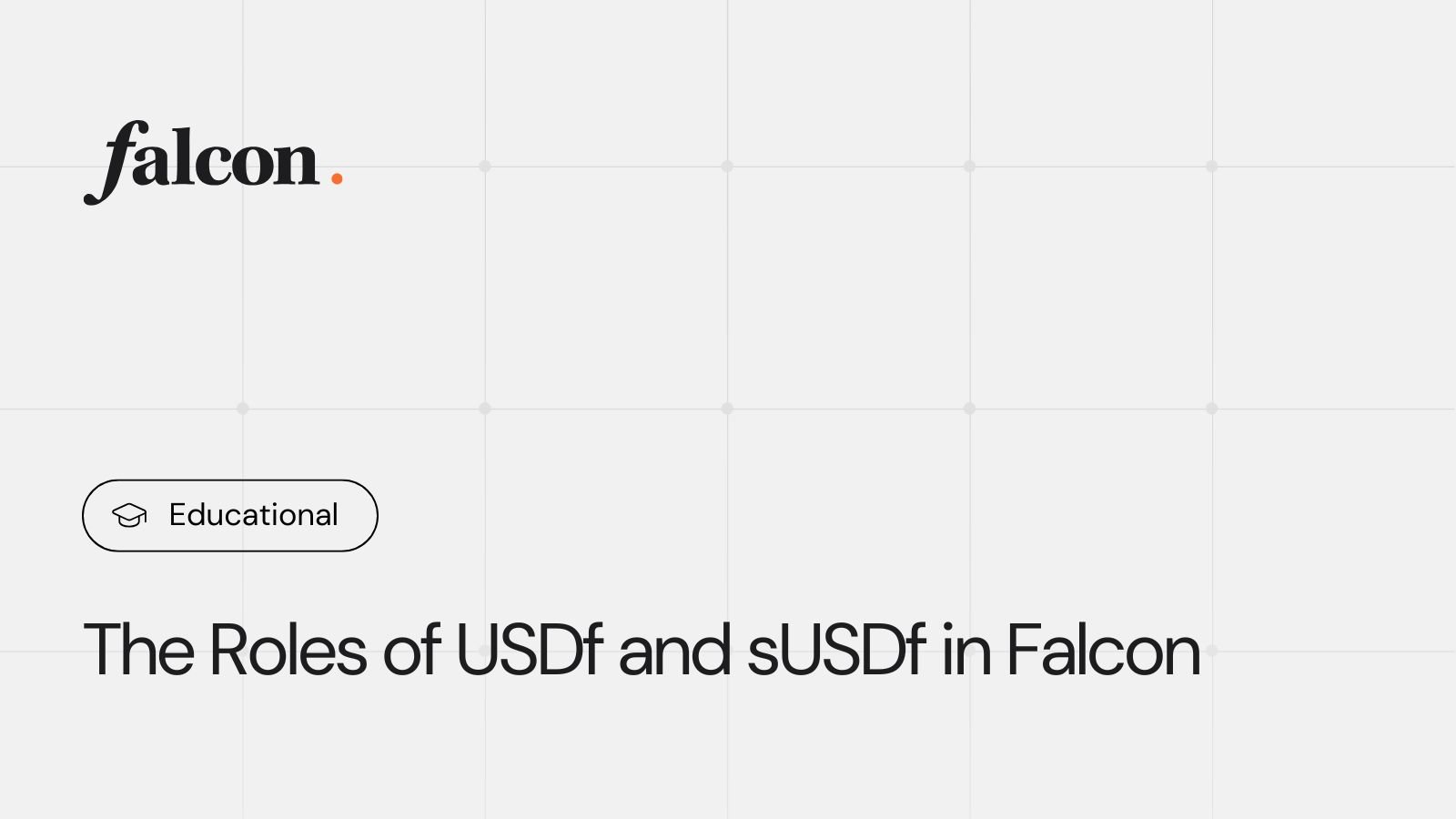Why Falcon Finance Needs Two Tokens: The Roles of USDf and sUSDf Explained
Updated • 15 Aug 2025
Published • 7 Jun 2025
4 mins

While traditional stablecoins provide a haven from market volatility, altcoins promise earnings from staking, and DeFi offers risky yet profitable opportunities, a new generation of crypto projects is emerging that offer improved alternatives for earning yield. Among them, Falcon Finance is carving out a niche with its sophisticated approach to yield generation, complemented with the dual-token system of USDf and sUSDf.
This article explores the tokens of Falcon Finance, and the roles of its synthetic dollar, USDf alongside its yield-bearing counterpart, sUSDf. Read further to uncover how they work together to help users earn on-chain yield.
The Logic of a Dual-Token System in Synthetic Dollar Protocols
While “traditional” stablecoin projects such as Circle’s USDC or Tether’s USDT only utilize one native asset, a new generation of synthetic dollar projects such as Falcon Finance (as well as Ethena, Sky or Ondo) rely on a dual-token architecture.
This system separates the stable unit of account from the mechanism that generates yield, which provides users with greater flexibility and transparency regarding their earnings. In the case of Falcon, one token, USDf, serves as a stable peg to the U.S. dollar, while the other, sUSDf, is the instrument for earning returns.
This model separates passive holding from active yield generation, giving users more flexibility and control over their exposure. Keep reading to learn the details about USDf and sUSDf tokens, their roles in Falcon Finance and ways to earn yield using these cryptocurrencies.
USDf Token: The Synthetic Dollar
USDf is an overcollateralized synthetic dollar that forms the bedrock of Falcon Finance. Its primary function is to act as a medium of exchange and a unit of account within the protocol. In just over a month following Falcon’s public launch at the end of April 2025, the total USDf supply exceeded $500 million.
Users can mint USDf by depositing a variety of eligible digital assets as collateral. The protocol accepts a wide range of stablecoins, including USDT, USDC, USDS, and many more. When these stablecoins are used as collateral, USDf is minted at a 1:1 ratio relative to the USD value of the deposited assets.
Falcon Finance also accepts non-stablecoin assets like BTC, ETH, SOL and other altcoins as collateral. In this case, an overcollateralization ratio is applied, meaning the value of the deposited collateral is higher than the value of the minted USDf. This overcollateralization acts as a critical buffer, protecting the protocol from market volatility and ensuring that every USDf token remains fully backed.
sUSDf Token: The Engine of Yield Generation
While USDf provides stability, sUSDf is the token that enables Falcon Finance users to earn returns. The process is straightforward: you stake your USDf tokens in the Falcon Finance app, and, in return, receive sUSDf to your crypto wallet.
These sUSDf tokens represent a user’s share in the staking pool and are designed to appreciate in value as Falcon Finance generates yield through its advanced investment strategies. The app earns returns from negative funding rate arbitrage, cross-exchange arbitrage, altcoin staking and other methods. Consequently, the value of sUSDf increases relative to USDf over time, reflecting the user’s principal plus their share of accumulated yield.
Yield Modes in Falcon Finance
To accommodate different investor preferences, Falcon Finance offers flexible staking options:
- Classic Yield. This option allows users to earn a competitive base yield without any lockup period, providing the flexibility to unstake their funds at any time.
- Boosted Yield. For those willing to lock up their funds for a fixed term, the “Boosted Yield” feature offers higher returns. The available options are:
- 3-month lockup: 105% of the base APY (e.g., 10.05% instead of 10%).
- 6-month lockup: 125% yield rate compared to Classic Yield (12.5% vs. 10%).
- 12-month lockup: 150% boost to the base yield rate (15% instead of 10%).
This tiered system allows Falcon Finance to have a greater certainty in allocating its crypto capital for time-sensitive strategies, which in turn can enhance potential returns for users who opt for longer lockup periods.
Symbiotic Relationship
The dual-token system of USDf and sUSDf in Falcon Finance creates a synergy. USDf provides a stable and reliable foundation, while sUSDf offers a clear and transparent mechanism for earning yield. This approach, combined with standards like ERC-4626, shows how blockchain protocols can leverage modular and transparent infrastructure to deliver secure, on-chain yield to users. This makes Falcon Finance a significant contender in the rapidly expanding landscape of yield-bearing crypto projects, bringing in more users and capital every day.